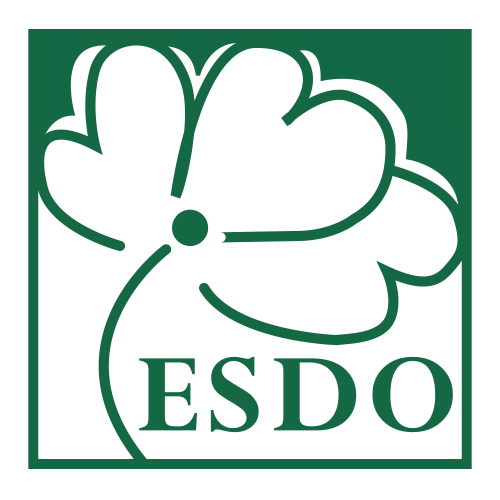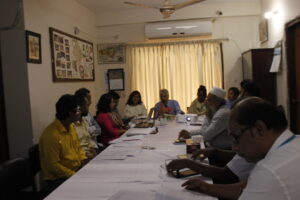6 June, 2015: A new study on lead in decorative paints in Bangladesh released today by Environment and Social Development Organization- ESDO finds that five brands of paints now sell paint with lead content levels below 90 ppm; seven brands – 85% of the paint market – sell paint with lead content levels below 600 ppm and could be sold in most countries where there are regulations limiting lead in paint.
This demonstrates that paint with low lead content can be produced cost-effectively in Bangladesh and that companies are willing and able to make the shift.
Guest of honor of the report launching program, Syed Marghub Murshed, Former Secretary, Government of Bangladesh and Chairperson of called for everyone’s help in building a lead and chemical free, hence, a safe and healthy environment. He said that “The health impacts of lead exposure on young children’s brains are lifelong, irreversible and untreatable. He also encourages the activity of ESDO to draft a “Specific Guideline” on lead paint production, import and trade to approach government to take proper actions for enacting a specific regulation.
Md. Shamsuzzaman, Secretary of BPMA, one of the special guests of the report launching program has welcomed the collaborative initiative of ESDO and IPEN. He said that the manufacturers association as a whole supports complete elimination of lead use in paint manufacturing. And the manufactures are agreed to eliminate the use of lead in paints by 2017 and set up the immediate standard of 50 ppm by 2015. ‘’
Dr. Abu Jafor Mahmood, Former faculty, University of Dhaka, one of the special guests of the program said, “When the paint chips or peels it poses a serious danger, especially to children who inhale or ingest the lead” said by EU representative, special guest of the program. “Yet despite the known health risks there is no legislation in place to prevent its import, production or sale.”
Dr. Shahriar Hossain, Secretary General of ESDO said “Exposure to lead is particularly dangerous for children and pregnant women; it inhibits intellectual and physical development and can cause poor concentration, disruptive behavior and can even result in death. Knowing the threats of lead exposure, ESDO is in constant motion to advocate for legislation in Bangladesh to be a mandatory standard of paint to below 50 ppm, that minimizing harm to our children and protect the environment”.
Siddika Sultana, Executive Director of ESDO said, ESDO and the BPMA jointly submitted petition to the honorable prime minister calling for a standard for the safe limit of lead in paint and third party certification for local and international paint manufacturers in Bangladesh. Besides this, if Government eliminate the duty fee on the import of zirconium dryer in Bangladesh than all companies can transition to the production of lead free paint.
The paint study released today was conducted as a part the IPEN Asian Lead Paint Elimination Project, which has been working with government, the paint industry and the public over the last 3 years to raise awareness of the dangers associated with high lead levels in paint. The Asian Lead Paint Elimination project is being implemented in seven countries (Bangladesh, India, Indonesia, Nepal, Philippines, Sri Lanka, and Thailand) with a total European Union funding of EUR 1.4 million (12,010,6930 BDT) over a period of 2012-2015. Environment and Social Development Organization- ESDO is implementing the project in Bangladesh.
Today’s report provides a follow-up analysis of paints which were revealed to contain high lead levels in the previous 2013 study as well as some brands and colors of paint that have not previously been analyzed.
Key findings include
The paint market has shifted significantly in Bangladesh
- 5 brands of paints now sell paint with lead content levels below 90 ppm; 7 brands – 85% of the paint market – sell paint with lead content levels below 600 ppm and could be sold in most countries where there are regulations limiting lead in paint. This demonstrates that paint with low lead content can be produced cost-effectively in Bangladesh and that companies are willing and able to make the shift.
- The number of paints with lead levels below 90 ppm has increased since the last paint study in 2012-13
- 2 paint brands (Elite and Roxy) with high lead levels in 2012-2013 showed significantly reduced lead levels (below 600 ppm) in all paints analyzed
But paints with high levels of lead are still widely available
- The number of paints with lead levels above 10,000 ppm was about the same in both the 2012-13 and the current study. Lead levels remained dangerously high in 15 brands, with one or more paints with levels above 10,000 ppm (Pailac, Romana, Good Luck, Mayna, Moon Moon, Al Hossain, Eurolac, Monilac, Moon Star, Ujala, Paramex, Raaz, Paintex, Rangs, Anchor)
- While there were fewer analyzed samples above 90 and 600 ppm in the current study when compared to the 2012-2013 study, -19 out of 22 brands still sold paints with a lead content above 600 ppm
- Lead reductions were the greatest in red paints with 9 of 17 paints with lead levels below 600 ppm in the current study, compared to 2 red paints at this level in the 2012-13. Lead levels in yellow paints showed the least change with only 2 paints of the 17 paints with high lead levels in the 2012-13 study now below 600 ppm.
The World Health Organization (WHO) calls lead paint “a major flashpoint” for children’s potential lead poisoning and says that “since the phase-out of leaded petrol, lead paint is one of the largest sources of exposure to lead in children.” Children are exposed to lead, when painted surfaces deteriorate over time and contaminate household dust and soils. Children, ages 0-6, engaging in normal hand-to-mouth behaviors are most at risk of damage to their intelligence and mental development from exposure to lead dust and soil.
In Bangladesh, lead paint regulation was enacted in 1995 under Sec. 6A of the Environment Conservation Act, 1995, “Restrictions on manufacture, sale etc. of articles injurious to environment.” Based on this regulation, ESDO is discussing with the appropriate government agencies how to enact a specific regulation and standard for lead paint production and marketing.
Key recommendations made by the report include:
Government:
- Public awareness campaigns on the hazards of lead in paint and lead paint regulation
- Enforcement of the regulation (once enacted), including periodic testing to ensure standard is being met
Industry
- Labeling of paint cans with lead content and information about lead hazard


